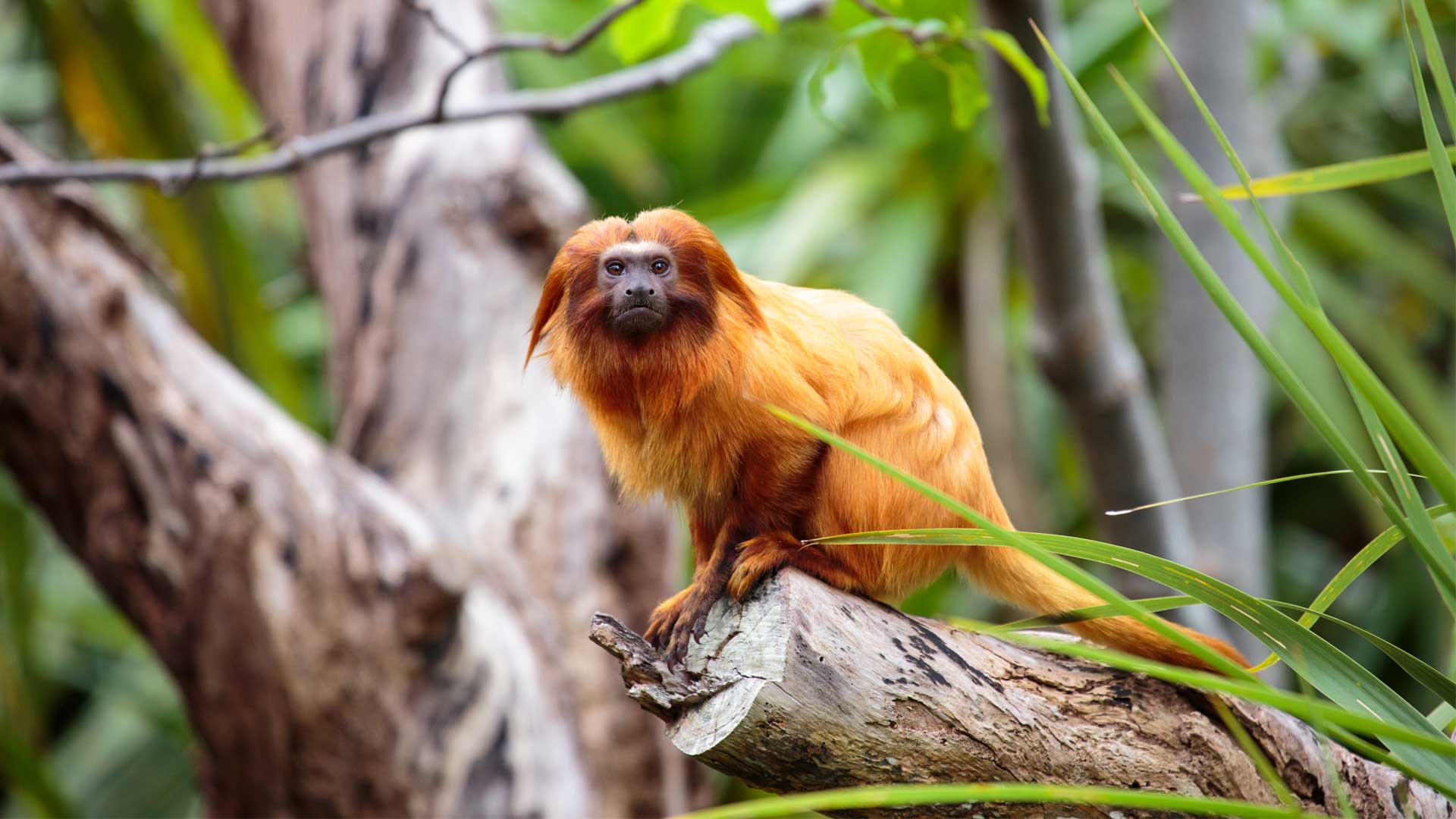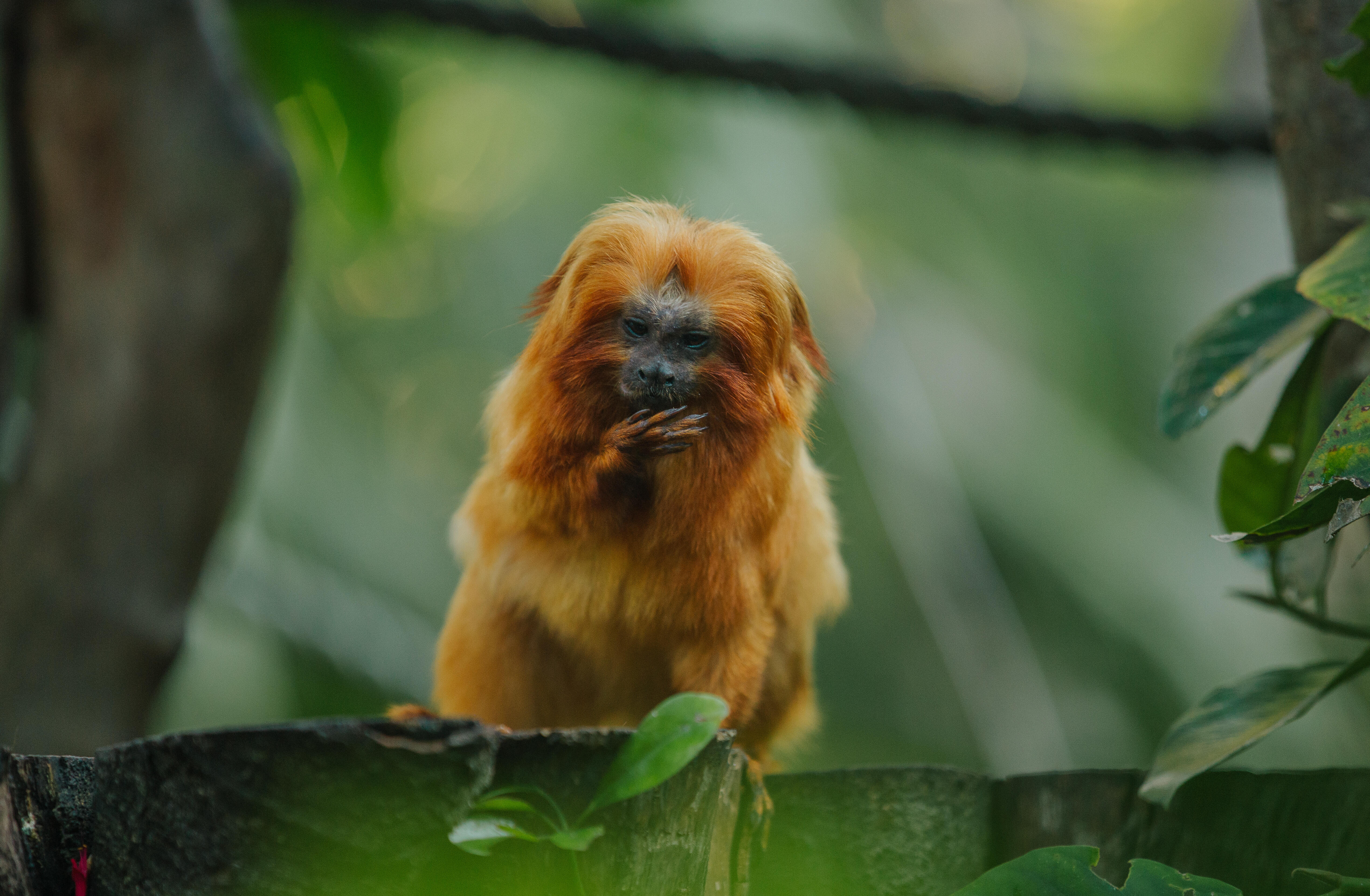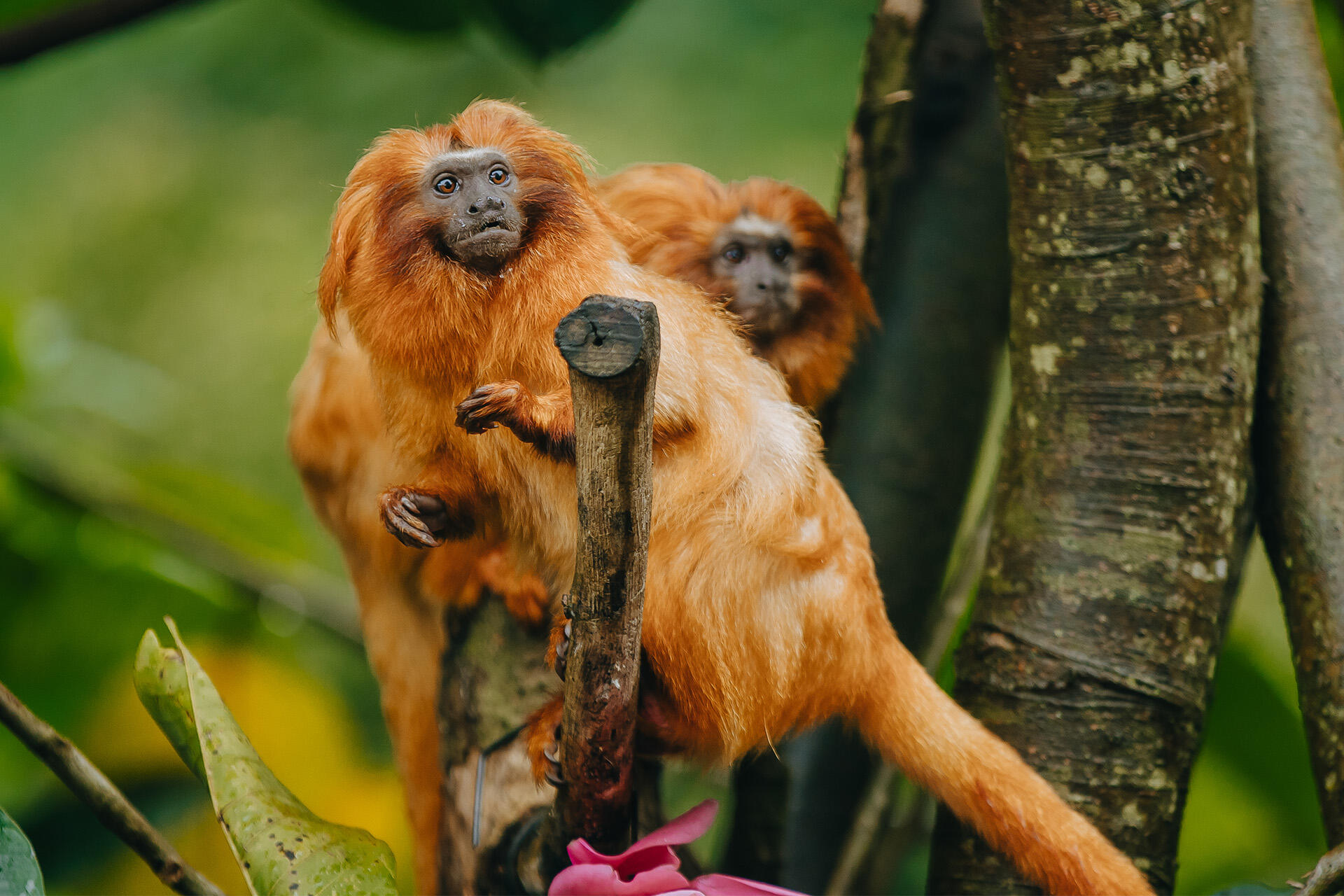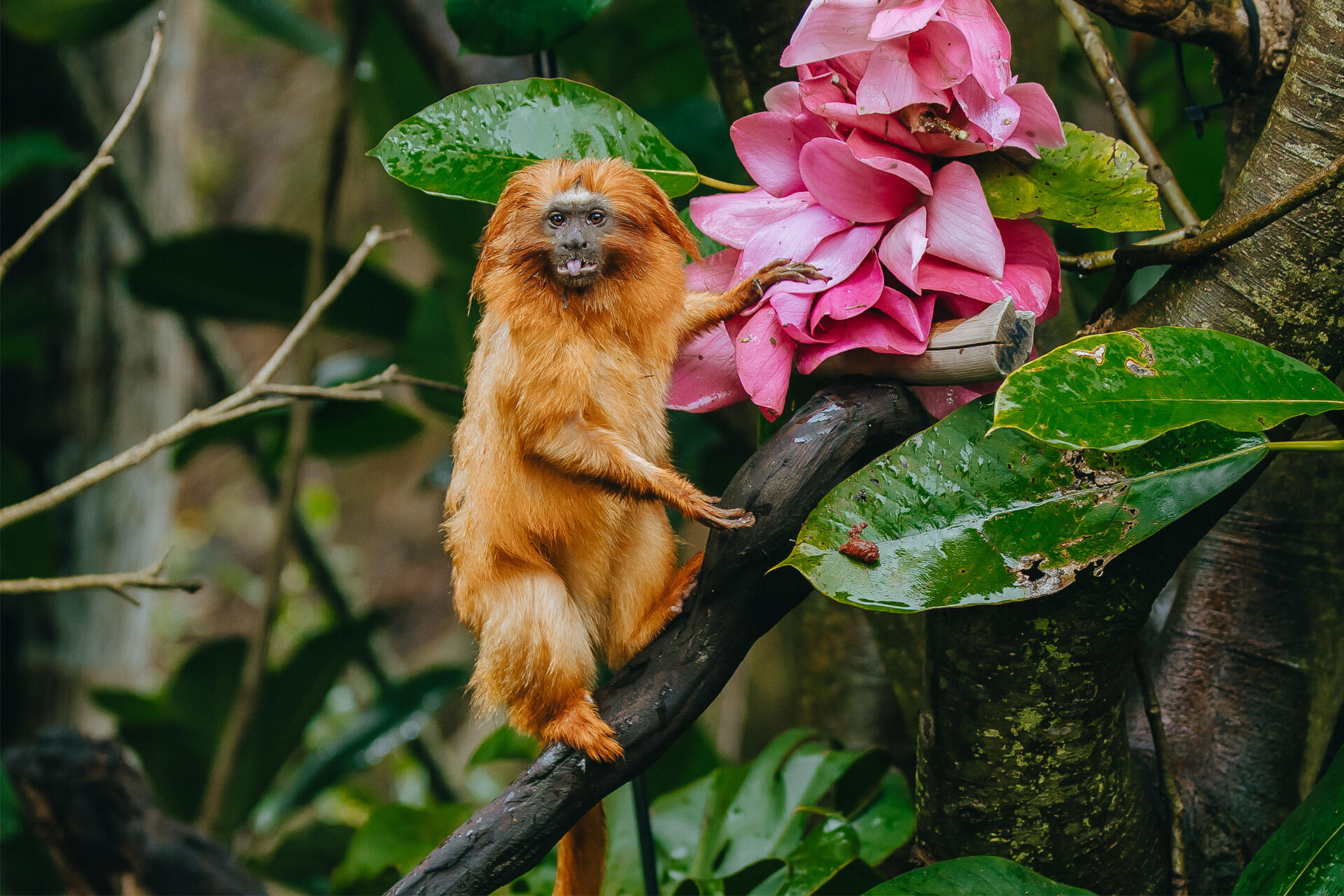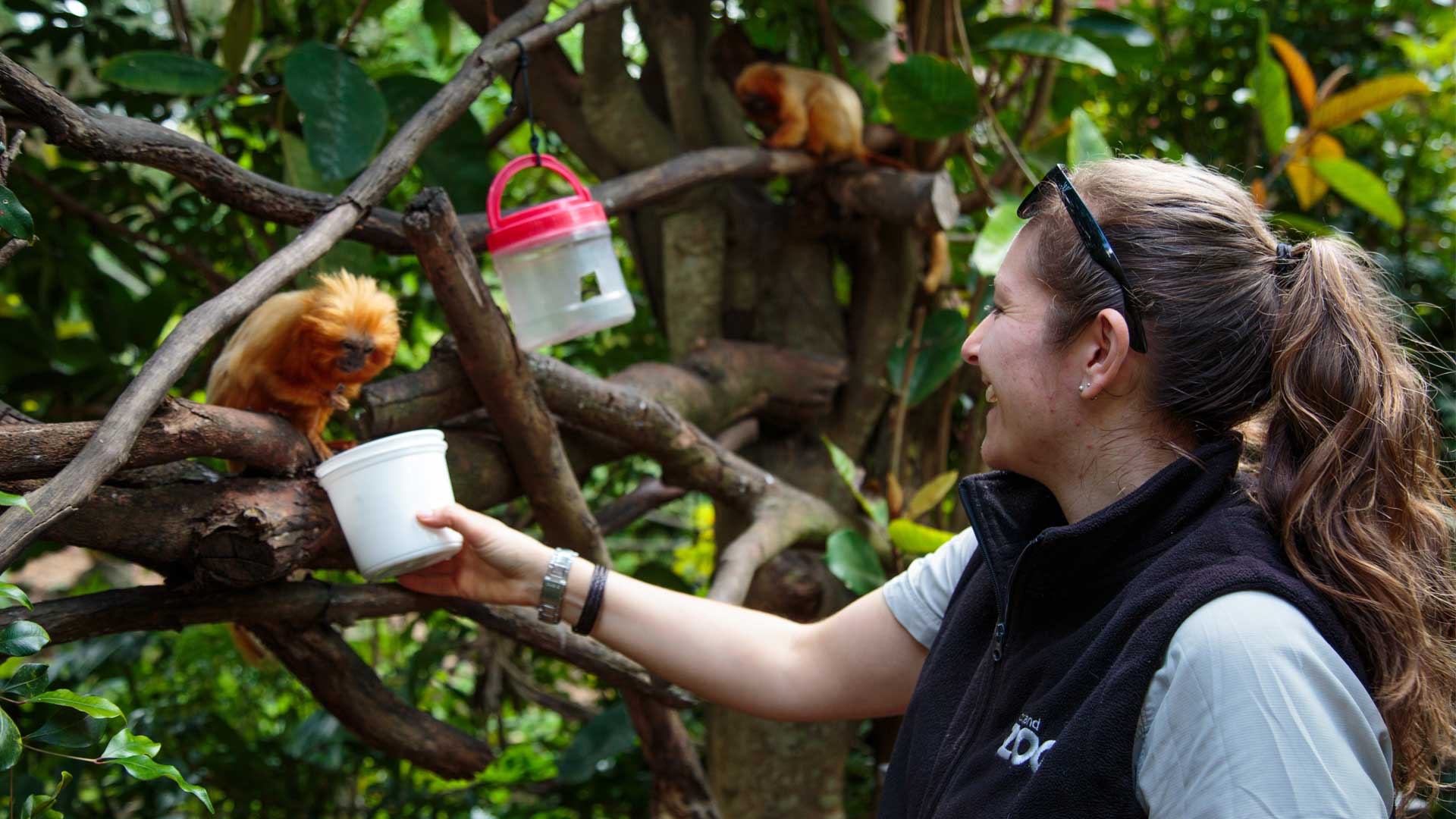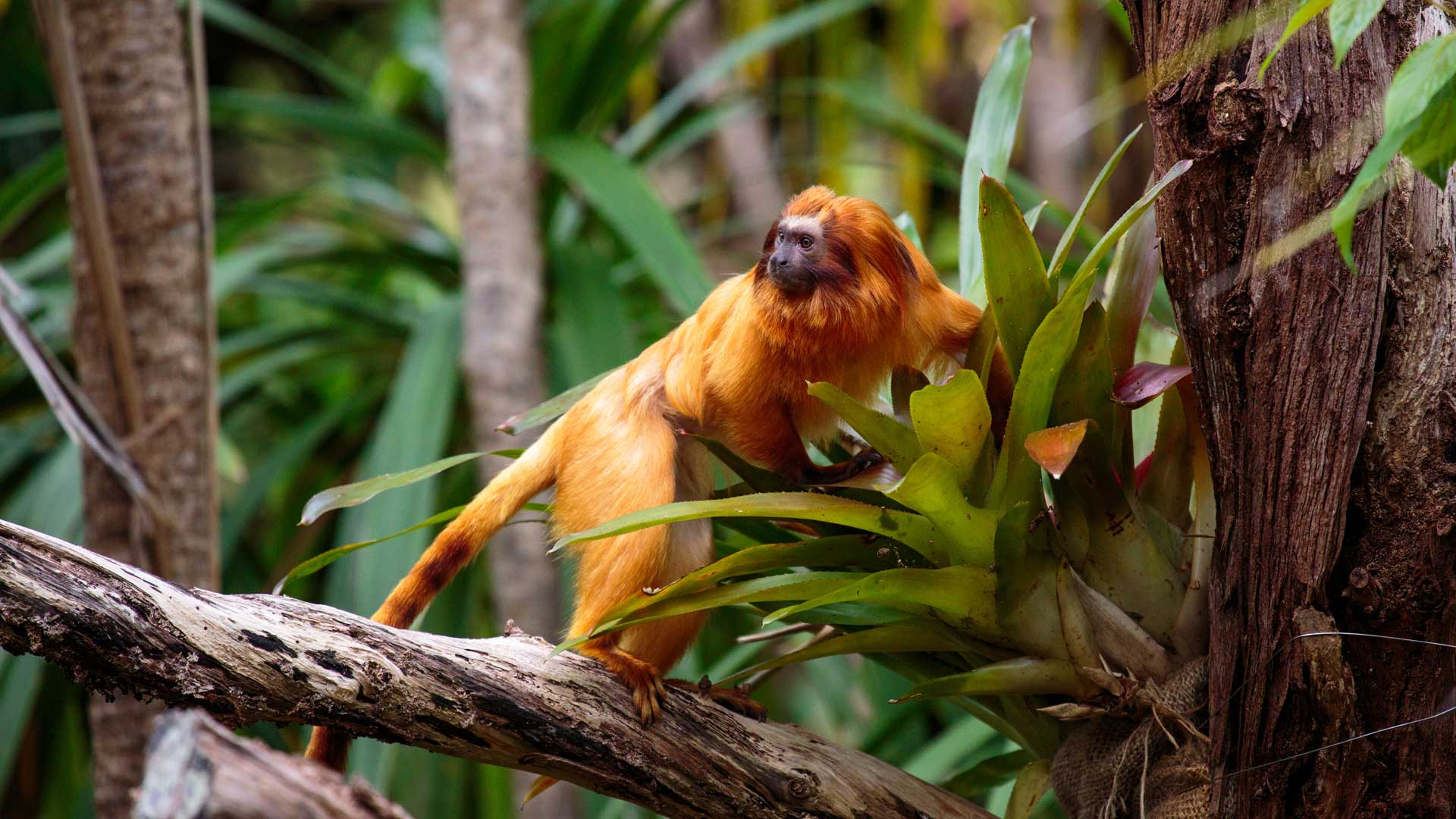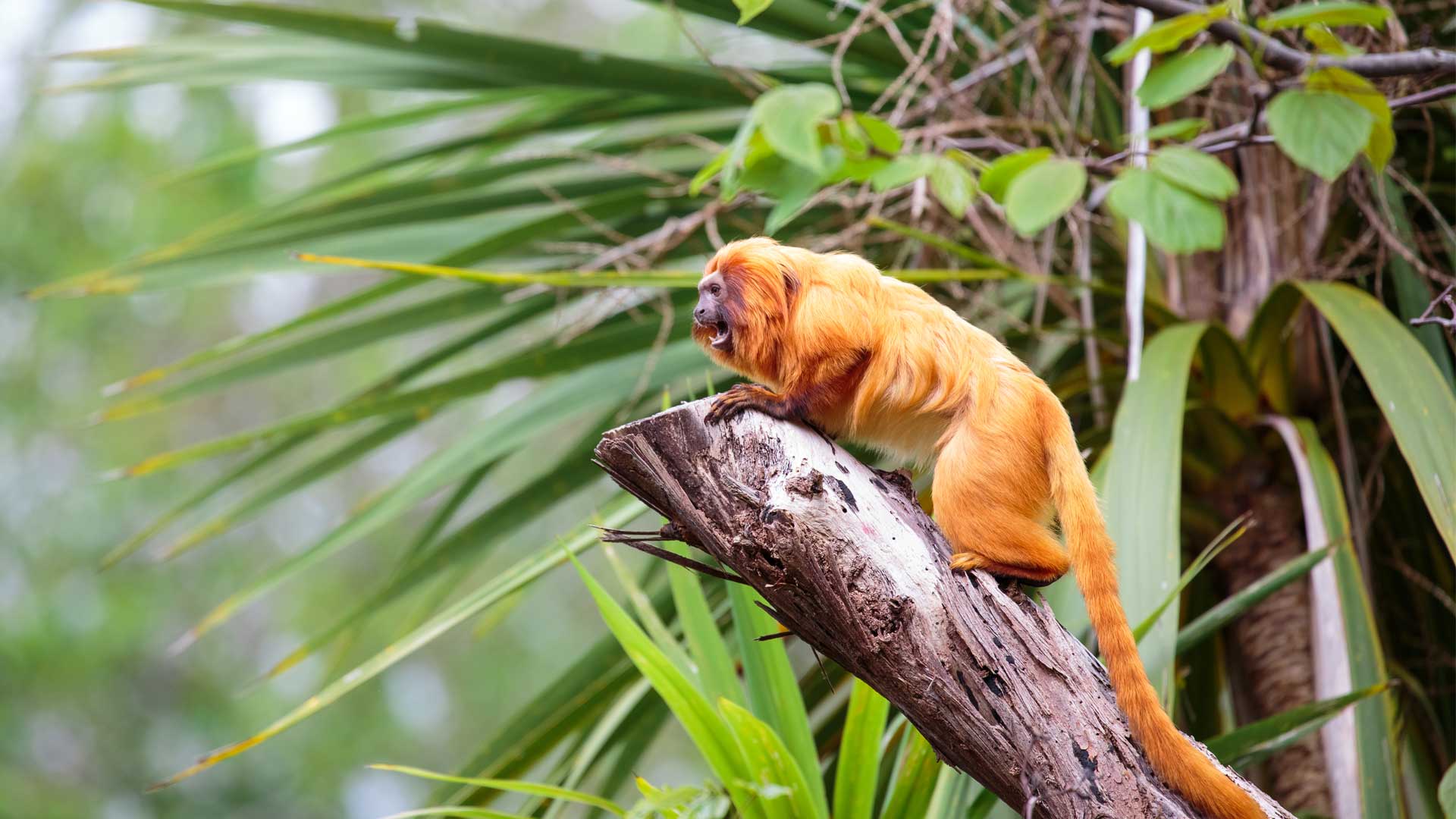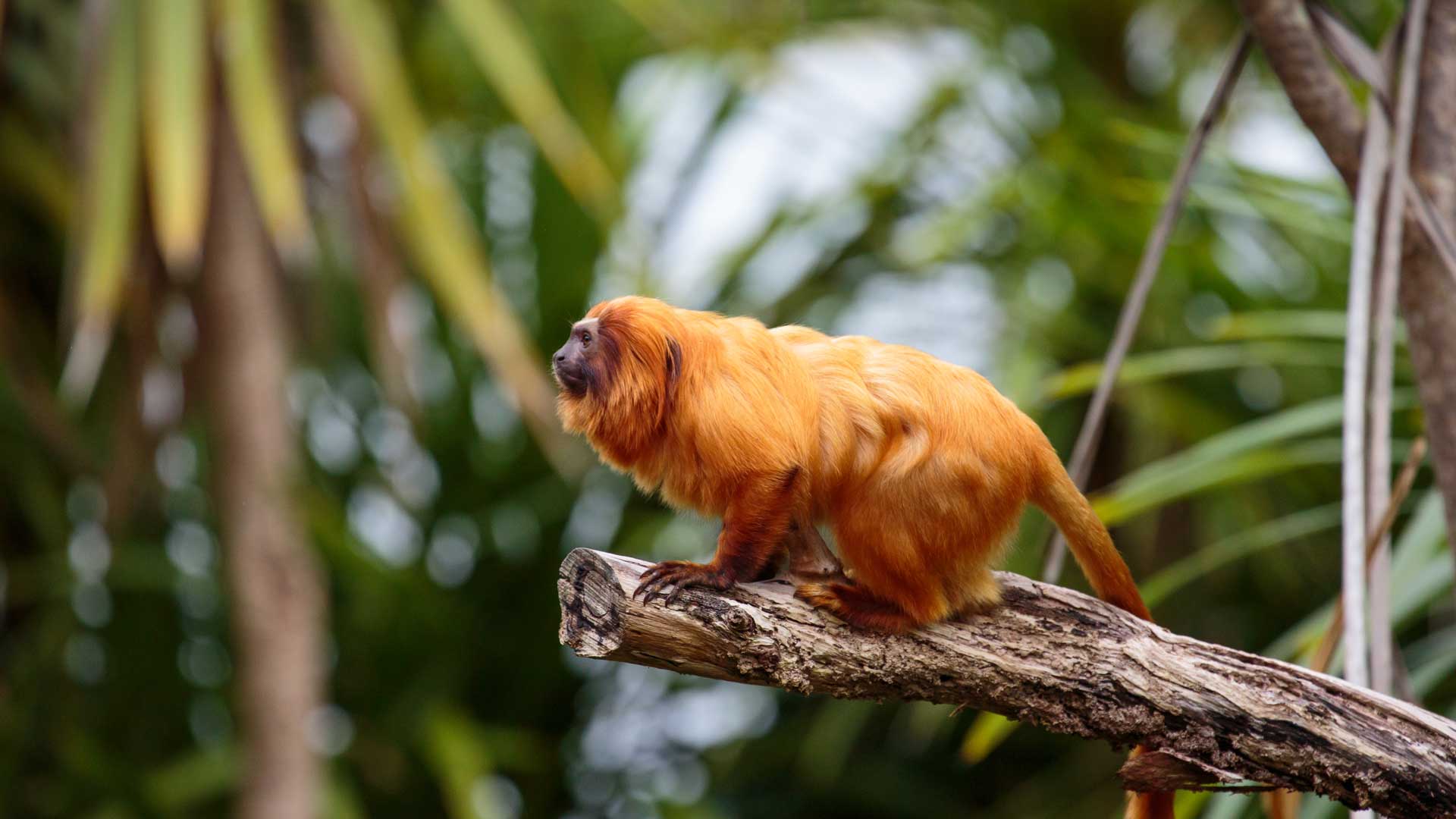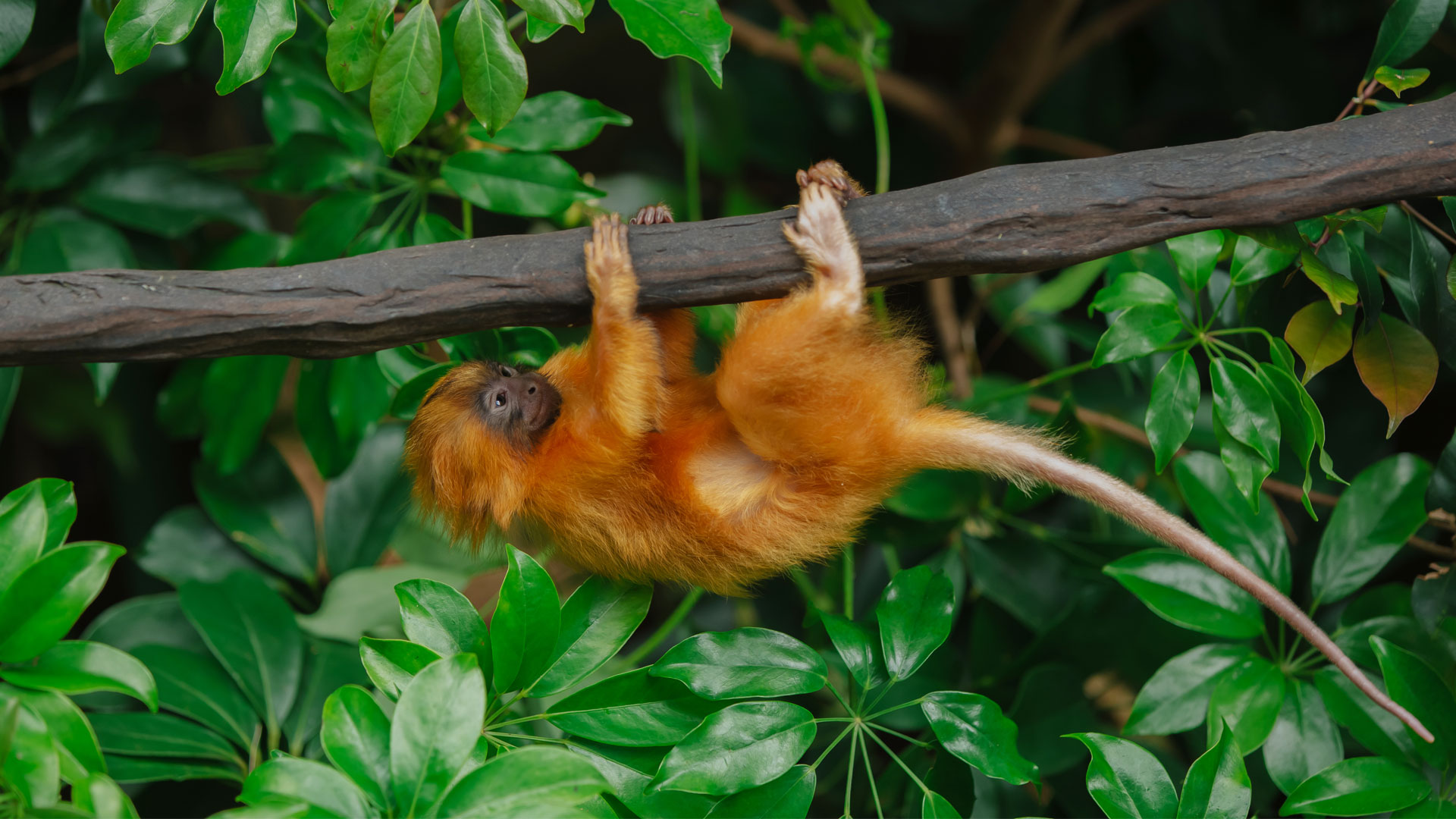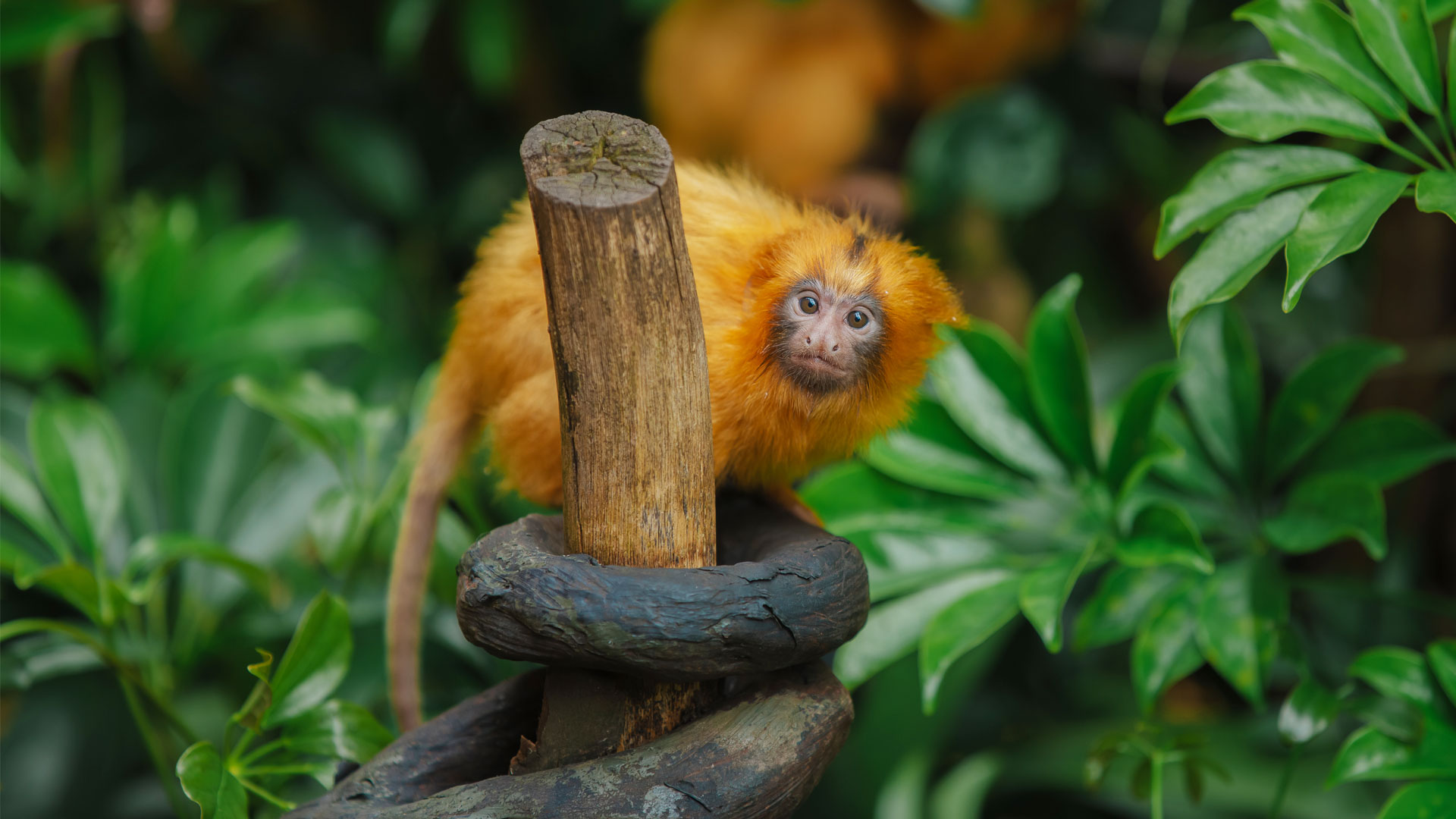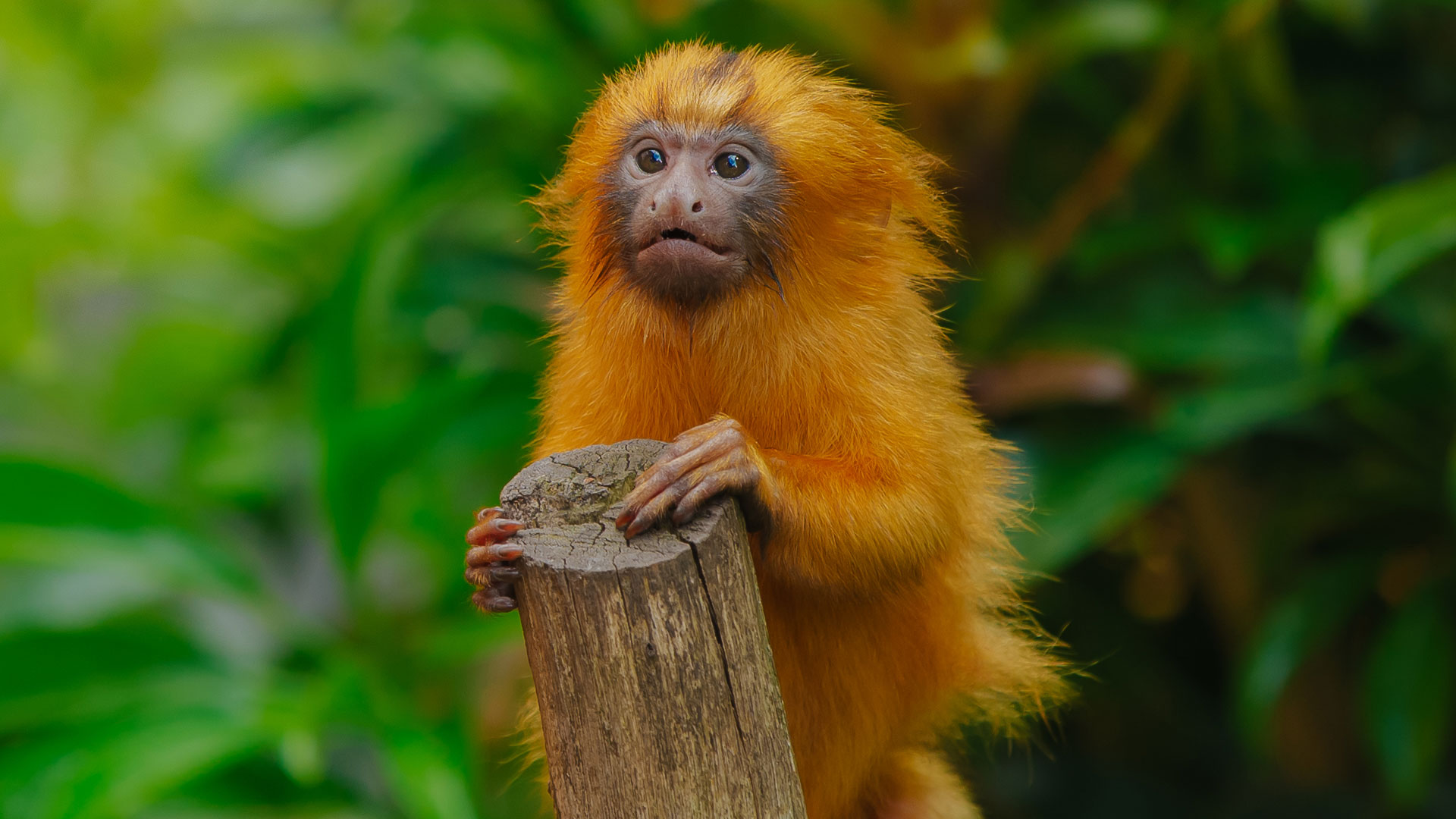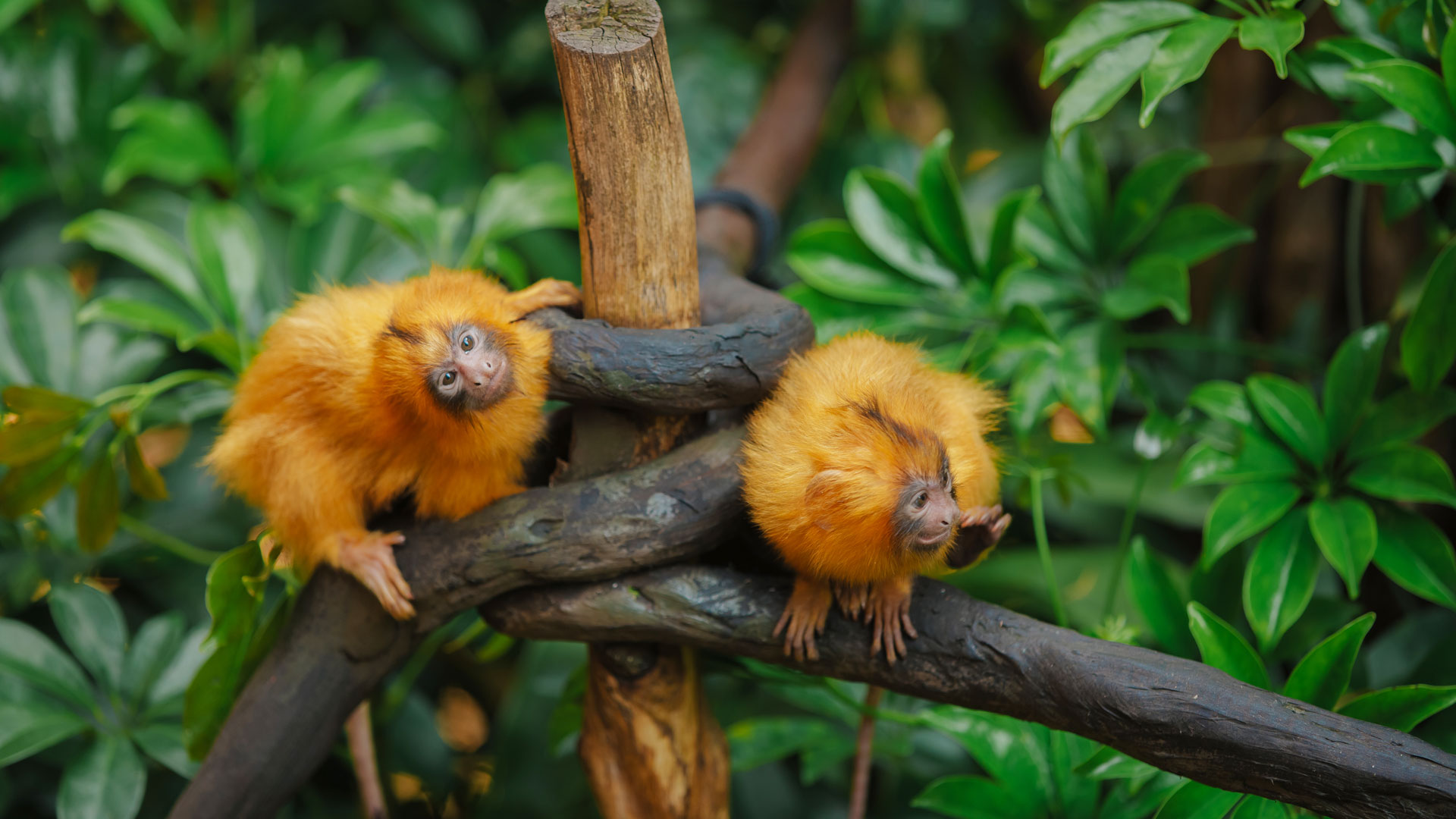Conservation
These endangered tamarins are native to the Atlantic Coastal Rainforest of Southeast Brazil. They are restricted to only 14 forest fragments due to extensive deforestation. Lianas and bromeliads are important plants for golden lion tamarins and important indicators of where they spend the majority of their time. These are vitally important for foraging with the tamarins using their long fingers to reach into their micro-habitats to reach insects and other food items.
In the 1970s there were as few as 200 golden lion tamarins in the wild. This called for a necessary conservation collaboration, with zoos coordinating a joint breeding programme to boost wild populations. This resulted in the reintroduction of 146 zoo-born golden lion tamarins back into their native habitat between 1984 - 2000.
Today, over 70% of the wild golden lion tamarin population descends from those reintroduced individuals.
In 2003 the International Union for Conservation of Nature (IUCN) ‘uplisted’ the species from Critically Endangered to Endangered, and the wild population is now estimated to be roughly 2,600 individuals.
Despite these successes, this species still faces threats in the wild – habitat destruction and fragmentation, poaching, and more recently, yellow fever outbreak. Thankfully, organisations such as Save the Golden Lion Tamarin and Associação Mico Leão Dourado are working with global conservation partners to build forest corridors, plant trees and monitor the golden lion tamarin populations.
Double trouble
Tamarins are often born in pairs, and in 2020 Auckland Zoo was twinning with the birth of golden lion tamarin twins. As their mother was unable to produce milk for them, our primate and veterinary teams made an informed decision to hand rear the twins with support from the Zoo and Aquarium Association (ZAA). The decision to hand rear is never taken lightly as there are always risks involved. Our primate team used their experience and expertise, coupled with the latest science, international contacts, and knowledge that the twins would have each other to bond with, to make this decision and without it these critically endangered twins would have simply not survived.
After a short hand rearing period, the twins were successfully re-integrated with their parents. We’re now one of the few places in the world that can proudly say we’ve successfully hand reared golden lion tamarins and will be adding to global knowledge about the species.
You can visit our golden lion tamarin troop in the South America Rainforest Track.


